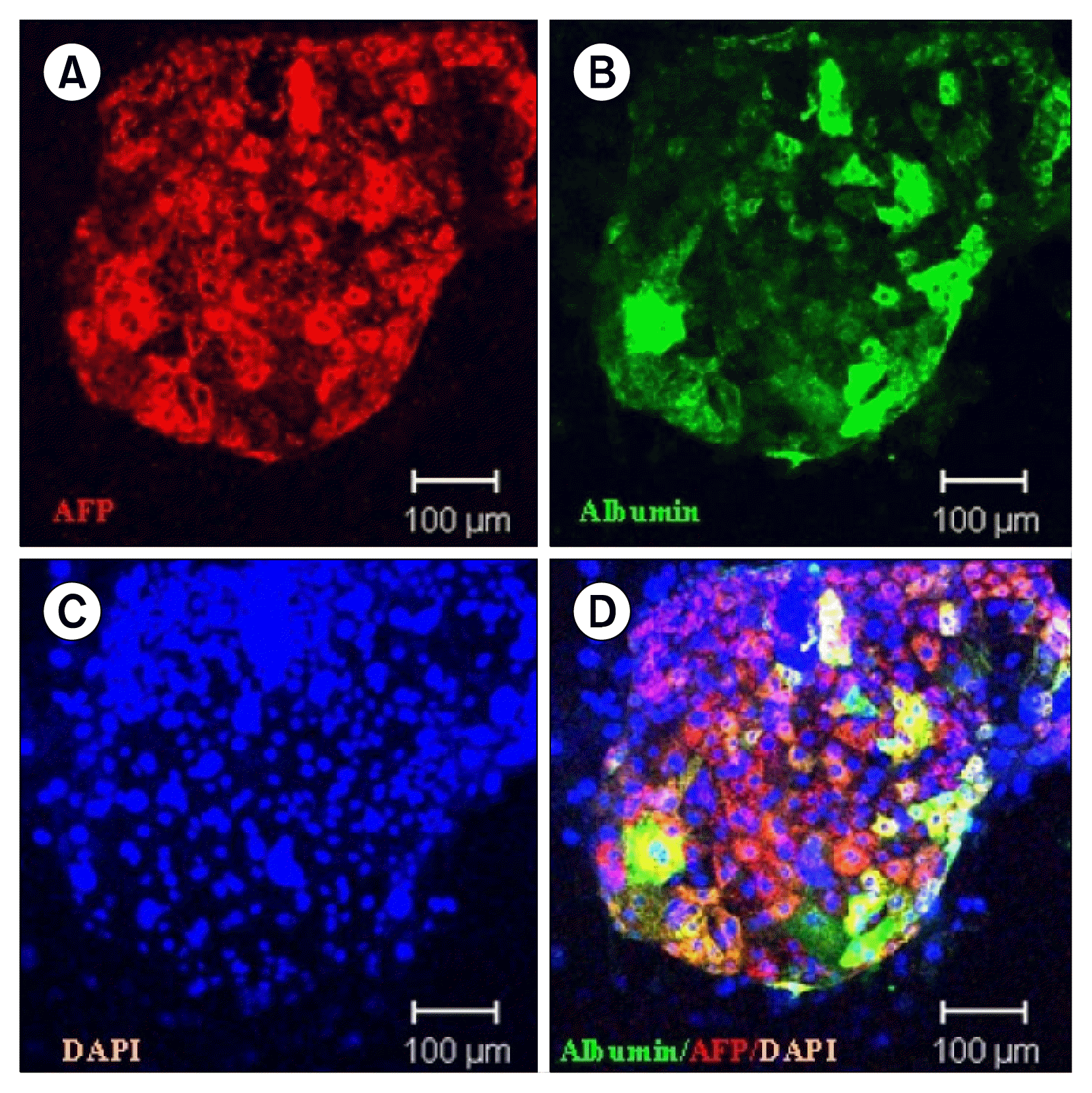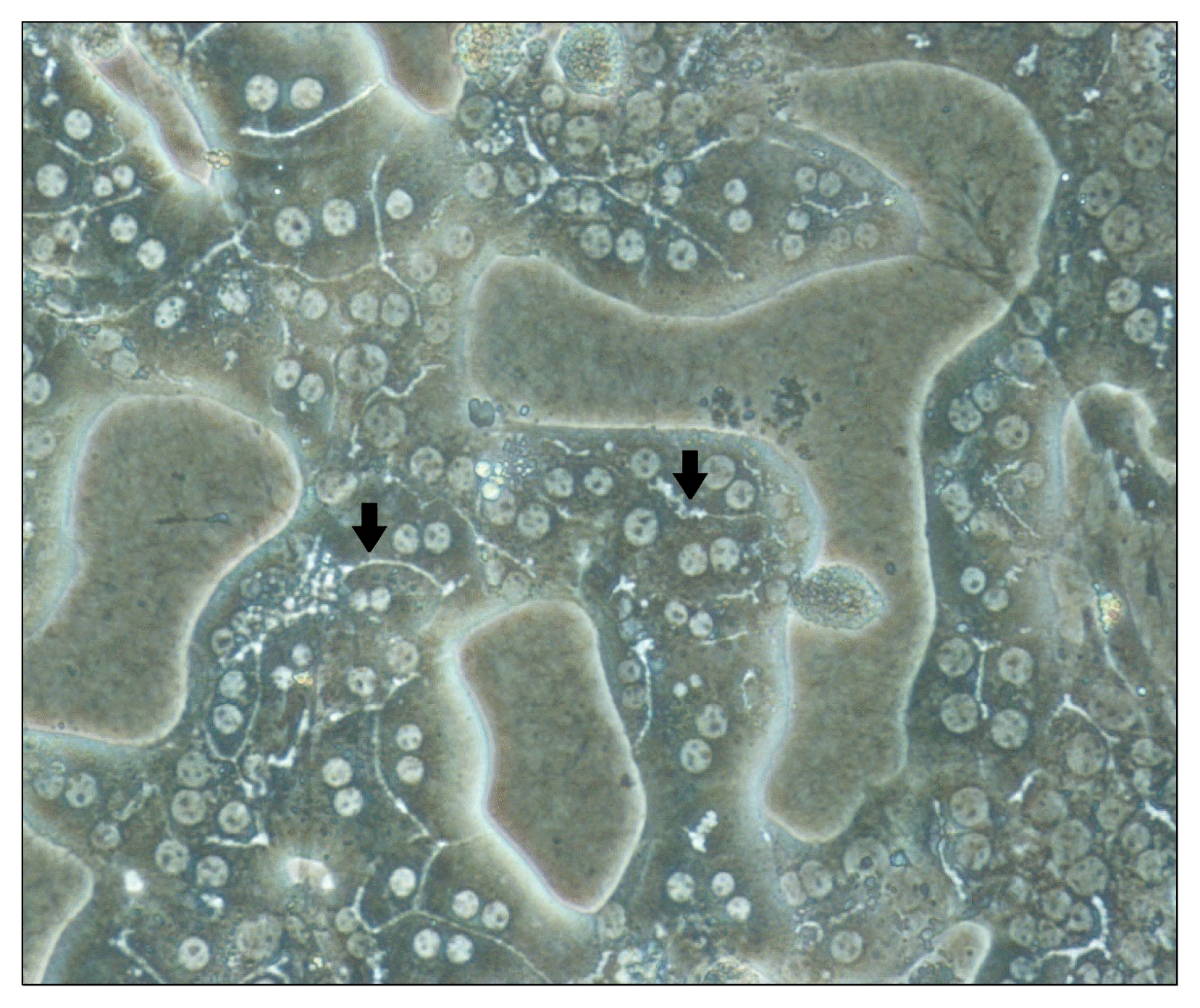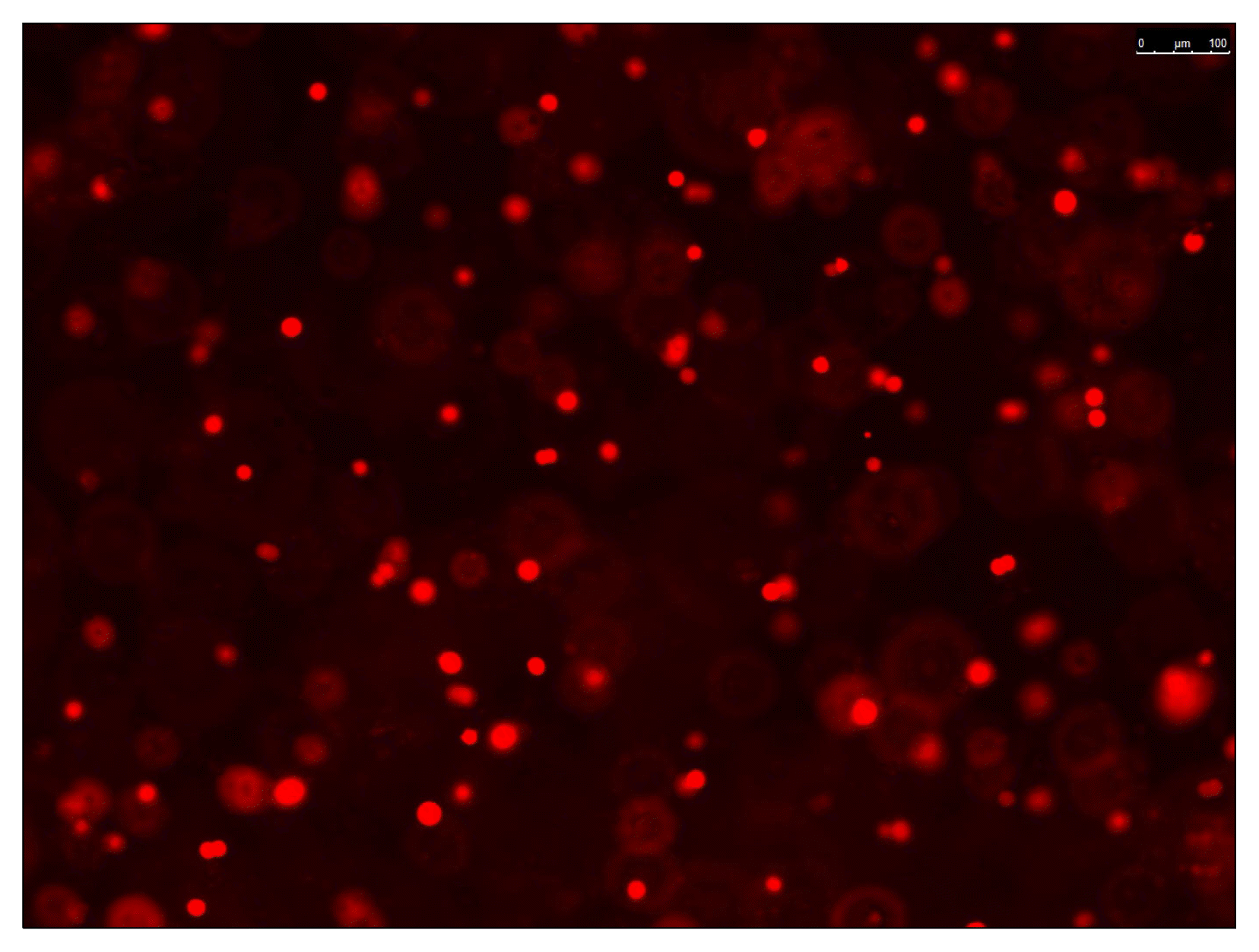1. Monga SPS. Molecular pathology of liver disease. Cagle PT, editor. Molecular pathology library. New York: Springer;2011. p. 7–25.
2. Lopez AD, Mathers CD, Ezzati M, Jamison DT, Murray CJL. Measuring the global burden of disease and risk factors, 1990–2001. Lopez AD, editor. Disease Control Priorities Project. Global burden of disease and risk factors. Washington DC: World Bank Publications;2006. p. 1–14.
3. Matz P, Adjaye J. Characterisation of human induced pluripotent stem cell-derived hepatocyte like cells and endodermal progenitors. European Journal of Medical Research. 2014; 19( Suppl 1):S8. DOI:
10.1186/2047-783X-19-S1-S8.
4. Dhawan A, Puppi J, Hughes RD, Mitry RR. Human hepatocyte transplantation: current experience and future challenges. Nat Rev Gastroenterol Hepatol. 2010; 7:288–298. DOI:
10.1038/nrgastro.2010.44. PMID:
20368738.

5. LeCluyse EL. Human hepatocyte culture systems for the in vitro evaluation of cytochrome P450 expression and regulation. Eur J Pharm Sci. 2001; 13:343–368. DOI:
10.1016/S0928-0987(01)00135-X. PMID:
11408150.

6. Yovchev MI, Xue Y, Shafritz DA, Locker J, Oertel M. Repopulation of the fibrotic/cirrhotic rat liver by transplanted hepatic stem/progenitor cells and mature hepatocytes. Hepatology. 2014; 59:284–295. DOI:
10.1002/hep.26615. PMCID:
4091900.

7. Komori J, Boone L, DeWard A, Hoppo T, Lagasse E. The mouse lymph node as an ectopic transplantation site for multiple tissues. Nat Biotechnol. 2012; 30:976–983. DOI:
10.1038/nbt.2379. PMID:
23000933. PMCID:
3469750.

8. Soltys KA, Soto-Gutiérrez A, Nagaya M, Baskin KM, Deutsch M, Ito R, Shneider BL, Squires R, Vockley J, Guha C, Roy-Chowdhury J, Strom SC, Platt JL, Fox IJ. Barriers to the successful treatment of liver disease by hepatocyte transplantation. J Hepatol. 2010; 53:769–774. DOI:
10.1016/j.jhep.2010.05.010. PMID:
20667616. PMCID:
2930077.

9. Hughes RD, Mitry RR, Dhawan A. Current status of hepatocyte transplantation. Transplantation. 2012; 93:342–347. DOI:
10.1097/TP.0b013e31823b72d6.

10. Sahi J, Grepper S, Smith C. Hepatocytes as a tool in drug metabolism, transport and safety evaluations in drug discovery. Curr Drug Discov Technol. 2010; 7:188–198. PMID:
20843293.

11. Allen KJ, Mifsud NA, Williamson R, Bertolino P, Hardikar W. Cell-mediated rejection results in allograft loss after liver cell transplantation. Liver Transpl. 2008; 14:688–694. PMID:
18433045.

12. Schwartz RE, Verfaillie C. Hepatic stem cells. Methods Mol Biol. 2010; 640:167–179. PMID:
20645052.

13. Nagata H, Nishitai R, Shirota C, Zhang JL, Koch CA, Cai J, Awwad M, Schuurman HJ, Christians U, Abe M, Baranowska-Kortylewicz J, Platt JL, Fox IJ. Prolonged survival of porcine hepatocytes in cynomolgus monkeys. Gastroenterology. 2007; 132:321–329. DOI:
10.1053/j.gastro.2006.10.013. PMID:
17241882.

15. Yang Q, Liu F, Pan XP, Lv G, Zhang A, Yu CB, Li L. Fluidized-bed bioartificial liver assist devices (BLADs) based on microencapsulated primary porcine hepatocytes have risk of porcine endogenous retroviruses transmission. Hepatol Int. 2010; 4:757–761.

16. te Velde AA, Flendrig LM, Ladiges NC, Chamuleau RA. Immunological consequences of the use of xenogeneic hepatocytes in a bioartificial liver for acute liver failure. Int J Artif Organs. 1997; 20:229–233. PMID:
9195241.

17. Krebs N, Neville C, Vacanti JP. Cellular transplants for liver diseases. Halberstadt C, Emerich DF, editors. cellular transplantation: from laboratory to clinic. Burlington, MA: AcademicPress;2011. p. 215–240.

18. Sussman NL, Chong MG, Koussayer T, He DE, Shang TA, Whisennand HH, Kelly JH. Reversal of fulminant hepatic failure using an extracorporeal liver assist device. Hepatology. 1992; 16:60–65. DOI:
10.1002/hep.1840160112. PMID:
1618484.

19. Tsiaoussis J, Newsome PN, Nelson LJ, Hayes PC, Plevris JN. Which hepatocyte will it be? Hepatocyte choice for bio-artificial liver support systems. Liver Transpl. 2001; 7:2–10. PMID:
11150414.

20. Ellis AJ, Hughes RD, Wendon JA, Dunne J, Langley PG, Kelly JH, Gislason GT, Sussman NL, Williams R. Pilot-controlled trial of the extracorporeal liver assist device in acute liver failure. Hepatology. 1996; 24:1446–1451. DOI:
10.1002/hep.510240625. PMID:
8938179.

21. Mazariegos GV, Patzer JF 2nd, Lopez RC, Giraldo M, Devera ME, Grogan TA, Zhu Y, Fulmer ML, Amiot BP, Kramer DJ. First clinical use of a novel bioartificial liver support system (BLSS). Am J Transplant. 2002; 2:260–266. DOI:
10.1034/j.1600-6143.2002.20311.x. PMID:
12096789.

22. Li J, Li LJ, Cao HC, Sheng GP, Yu HY, Xu W, Sheng JF. Establishment of highly differentiated immortalized human hepatocyte line with simian virus 40 large tumor antigen for liver based cell therapy. ASAIO J. 2005; 51:262–268. DOI:
10.1097/01.MAT.0000161045.16805.8B. PMID:
15968957.

23. Kobayashi N, Okitsu T, Tanaka N. Cell choice for bio-artificial livers. Keio J Med. 2003; 52:151–157. DOI:
10.2302/kjm.52.151. PMID:
14529147.

24. Yoon JH, Lee HV, Lee JS, Park JB, Kim CY. Development of a non-transformed human liver cell line with differentiated-hepatocyte and urea-synthetic functions: applicable for bioartificial liver. Int J Artif Organs. 1999; 22:769–777. PMID:
10612305.

25. Deurholt T, van Til NP, Chhatta AA, ten Bloemendaal L, Schwartlander R, Payne C, Plevris JN, Sauer IM, Chamuleau RA, Elferink RP, Seppen J, Hoekstra R. Novel immortalized human fetal liver cell line, cBAL111, has the potential to differentiate into functional hepatocytes. BMC Biotechnol. 2009; 9:89. DOI:
10.1186/1472-6750-9-89. PMID:
19845959. PMCID:
2770505.

26. Poyck PP, van Wijk AC, van der Hoeven TV, de Waart DR, Chamuleau RA, van Gulik TM, Oude Elferink RP, Hoekstra R. Evaluation of a new immortalized human fetal liver cell line (cBAL111) for application in bioartificial liver. J Hepatol. 2008; 48:266–275. DOI:
10.1016/j.jhep.2007.09.018.

27. Poyck PP, Hoekstra R, van Wijk AC, Attanasio C, Calise F, Chamuleau RA, van Gulik TM. Functional and morphological comparison of three primary liver cell types cultured in the AMC bioartificial liver. Liver Transpl. 2007; 13:589–598. DOI:
10.1002/lt.21090. PMID:
17394165.

28. Chen Y, Li J, Liu X, Zhao W, Wang Y, Wang X. Transplantation of immortalized human fetal hepatocytes prevents acute liver failure in 90% hepatectomized mice. Transplant Proc. 2010; 42:1907–1914. DOI:
10.1016/j.transproceed.2010.01.061. PMID:
20620547.

29. Diekmann S, Bader A, Schmitmeier S. Present and Future Developments in Hepatic Tissue Engineering for Liver Support Systems : State of the art and future developments of hepatic cell culture techniques for the use in liver support systems. Cytotechnology. 2006; 50:163–179. DOI:
10.1007/s10616-006-6336-4.

30. Fausto N, Campbell JS. The role of hepatocytes and oval cells in liver regeneration and repopulation. Mech Dev. 2003; 120:117–130. DOI:
10.1016/S0925-4773(02)00338-6.

31. Santoni-Rugiu E, Jelnes P, Thorgeirsson SS, Bisgaard HC. Progenitor cells in liver regeneration: molecular responses controlling their activation and expansion. APMIS. 2005; 113:876–902. DOI:
10.1111/j.1600-0463.2005.apm_386.x.

32. Evarts RP, Nagy P, Nakatsukasa H, Marsden E, Thorgeirsson SS. In vivo differentiation of rat liver oval cells into hepatocytes. Cancer Res. 1989; 49:1541–1547. PMID:
2466557.
33. Coleman WB, McCullough KD, Esch GL, Faris RA, Hixson DC, Smith GJ, Grisham JW. Evaluation of the differentiation potential of WB-F344 rat liver epithelial stem-like cells in vivo. Differentiation to hepatocytes after transplantation into dipeptidylpeptidase-IV-deficient rat liver. Am J Pathol. 1997; 151:353–359. PMID:
9250149. PMCID:
1858002.
34. Wang X, Foster M, Al-Dhalimy M, Lagasse E, Finegold M, Grompe M. The origin and liver repopulating capacity of murine oval cells. Proc Natl Acad Sci U S A. 2003; 100( Suppl 1):11881–11888. PMID:
12902545. PMCID:
304102.

37. Lagasse E, Connors H, Al-Dhalimy M, Reitsma M, Dohse M, Osborne L, Wang X, Finegold M, Weissman IL, Grompe M. Purified hematopoietic stem cells can differentiate into hepatocytes in vivo. Nat Med. 2000; 6:1229–1234. PMID:
11062533.

38. Wang X, Willenbring H, Akkari Y, Torimaru Y, Foster M, Al-Dhalimy M, Lagasse E, Finegold M, Olson S, Grompe M. Cell fusion is the principal source of bone-marrow-derived hepatocytes. Nature. 2003; 422:897–901. DOI:
10.1038/nature01531. PMID:
12665832.

39. Lee KD, Kuo TK, Whang-Peng J, Chung YF, Lin CT, Chou SH, Chen JR, Chen YP, Lee OK. In vitro hepatic differentiation of human mesenchymal stem cells. Hepatology. 2004; 40:1275–1284. DOI:
10.1002/hep.20469. PMID:
15562440.

40. Petrie Aronin CE, Tuan RS. Therapeutic potential of the immunomodulatory activities of adult mesenchymal stem cells. Birth Defects Res C Embryo Today. 2010; 90:67–74. PMID:
20301222.

41. Chang YJ, Liu JW, Lin PC, Sun LY, Peng CW, Luo GH, Chen TM, Lee RP, Lin SZ, Harn HJ, Chiou TW. Mesenchymal stem cells facilitate recovery from chemically induced liver damage and decrease liver fibrosis. Life Sci. 2009; 85:517–525. PMID:
19686763.

42. Aurich I, Mueller LP, Aurich H, Luetzkendorf J, Tisljar K, Dollinger MM, Schormann W, Walldorf J, Hengstler JG, Fleig WE, Christ B. Functional integration of hepatocytes derived from human mesenchymal stem cells into mouse livers. Gut. 2007; 56:405–415. DOI:
10.1136/gut.2005.090050.

43. di Bonzo LV, Ferrero I, Cravanzola C, Mareschi K, Rustichell D, Novo E, Sanavio F, Cannito S, Zamara E, Bertero M, Davit A, Francica S, Novelli F, Colombatto S, Fagioli F, Parola M. Human mesenchymal stem cells as a two-edged sword in hepatic regenerative medicine: engraftment and hepatocyte differentiation versus profibrogenic potential. Gut. 2008; 57:223–231. DOI:
10.1136/gut.2006.111617.

44. Aurich H, Sgodda M, Kaltwasser P, Vetter M, Weise A, Liehr T, Brulport M, Hengstler JG, Dollinger MM, Fleig WE, Christ B. Hepatocyte differentiation of mesenchymal stem cells from human adipose tissue in vitro promotes hepatic integration in vivo. Gut. 2009; 58:570–581. DOI:
10.1136/gut.2008.154880.

45. Piryaei A, Valojerdi MR, Shahsavani M, Baharvand H. Differentiation of bone marrow-derived mesenchymal stem cells into hepatocyte-like cells on nanofibers and their transplantation into a carbon tetrachloride-induced liver fibrosis model. Stem Cell Rev. 2011; 7:103–118.

46. Jalan R, Williams R. Acute-on-chronic liver failure: patho-physiological basis of therapeutic options. Blood Purif. 2002; 20:252–261.

47. Chamuleau RA, Deurholt T, Hoekstra R. Which are the right cells to be used in a bioartificial liver? Metab Brain Dis. 2005; 20:327–335. PMID:
16382343.

48. Payne CM, Samuel K, Pryde A, King J, Brownstein D, Schrader J, Medine CN, Forbes SJ, Iredale JP, Newsome PN, Hay DC. Persistence of functional hepatocyte-like cells in immune-compromised mice. Liver Int. 2011; 31:254–262.

49. Müller LU, Daley GQ, Williams DA. Upping the ante: recent advances in direct reprogramming. Mol Ther. 2009; 17:947–953. PMID:
19337233. PMCID:
2835184.

50. Shan J, Schwartz RE, Ross NT, Logan DJ, Thomas D, Duncan SA, North TE, Goessling W, Carpenter AE, Bhatia SN. Identification of small molecules for human hepatocyte expansion and iPS differentiation. Nat Chem Biol. 2013; 9:514–520. PMID:
23728495. PMCID:
3720805.

51. Liu H, Kim Y, Sharkis S, Marchionni L, Jang YY. In vivo liver regeneration potential of human induced pluripotent stem cells from diverse origins. Sci Transl Med. 2011; 3:82ra39. DOI:
10.1126/scitranslmed.3002376. PMID:
21562231. PMCID:
3305909.

52. Yu YD, Kim KH, Lee SG, Choi SY, Kim YC, Byun KS, Cha IH, Park KY, Cho CH, Choi DH. Hepatic differentiation from human embryonic stem cells using stromal cells. J Surg Res. 2011; 170:e253–e261. DOI:
10.1016/j.jss.2011.06.032. PMID:
21816427.

53. Sekiya S, Suzuki A. Direct conversion of mouse fibroblasts to hepatocyte-like cells by defined factors. Nature. 2011; 475:390–393. DOI:
10.1038/nature10263. PMID:
21716291.

54. Huang P, He Z, Ji S, Sun H, Xiang D, Liu C, Hu Y, Wang X, Hui L. Induction of functional hepatocyte-like cells from mouse fibroblasts by defined factors. Nature. 2011; 475:386–389. DOI:
10.1038/nature10116. PMID:
21562492.

55. Huang P, Zhang L, Gao Y, He Z, Yao D, Wu Z, Cen J, Chen X, Liu C, Hu Y, Lai D, Hu Z, Chen L, Zhang Y, Cheng X, Ma X, Pan G, Wang X, Hui L. Direct reprogramming of human fibroblasts to functional and expandable hepatocytes. Cell Stem Cell. 2014; 14:370–384. DOI:
10.1016/j.stem.2014.01.003. PMID:
24582927.

56. Du Y, Wang J, Jia J, Song N, Xiang C, Xu J, Hou Z, Su X, Liu B, Jiang T, Zhao D, Sun Y, Shu J, Guo Q, Yin M, Sun D, Lu S, Shi Y, Deng H. Human hepatocytes with drug metabolic function induced from fibroblasts by lineage reprogramming. Cell Stem Cell. 2014; 14:394–403. DOI:
10.1016/j.stem.2014.01.008. PMID:
24582926.

57. Zhu S, Rezvani M, Harbell J, Mattis AN, Wolfe AR, Benet LZ, Willenbring H, Ding S. Mouse liver repopulation with hepatocytes generated from human fibroblasts. Nature. 2014; 508:93–97. DOI:
10.1038/nature13020. PMID:
24572354. PMCID:
4161230.

58. Yu B, He ZY, You P, Han QW, Xiang D, Chen F, Wang MJ, Liu CC, Lin XW, Borjigin U, Zi XY, Li JX, Zhu HY, Li WL, Han CS, Wangensteen KJ, Shi Y, Hui LJ, Wang X, Hu YP. Reprogramming fibroblasts into bipotential hepatic stem cells by defined factors. Cell Stem Cell. 2013; 13:328–340. DOI:
10.1016/j.stem.2013.06.017. PMID:
23871605.

59. Malik R, Selden C, Hodgson H. The role of non-parenchymal cells in liver growth. Semin Cell Dev Biol. 2002; 13:425–431. DOI:
10.1016/S1084952102001301. PMID:
12468243.

62. Ansede JH, Smith WR, Perry CH, St Claire RL 3rd, Brouwer KR. An in vitro assay to assess transporter-based cholestatic hepatotoxicity using sandwich-cultured rat hepatocytes. Drug Metab Dispos. 2010; 38:276–280. DOI:
10.1124/dmd.109.028407.

63. Begue JM, Guguen-Guillouzo C, Pasdeloup N, Guillouzo A. Prolonged maintenance of active cytochrome P-450 in adult rat hepatocytes co-cultured with another liver cell type. Hepatology. 1984; 4:839–842. DOI:
10.1002/hep.1840040507. PMID:
6434390.

64. Rojkind M, Novikoff PM, Greenwel P, Rubin J, Rojas-Valencia L, de Carvalho AC, Stockert R, Spray D, Hertzberg EL, Wolkoff AW. Characterization and functional studies on rat liver fat-storing cell line and freshly isolated hepatocyte coculture system. Am J Pathol. 1995; 146:1508–1520. PMID:
7778689. PMCID:
1870907.
65. Bhatia SN, Balis UJ, Yarmush ML, Toner M. Effect of cell-cell interactions in preservation of cellular phenotype: cocultivation of hepatocytes and nonparenchymal cells. FASEB J. 1999; 13:1883–1900. PMID:
10544172.

66. Burkhardt B, Martinez-Sanchez JJ, Bachmann A, Ladurner R, Nüssler AK. Long-term culture of primary hepatocytes: new matrices and microfluidic devices. Hepatology International. 2014; 8:14–22. DOI:
10.1007/s12072-013-9487-3.

67. Saliba F, Camus C, Durand F, Mathurin P, Delafosse B, Barange K, Perrigault PF, Revel P, Serfaty L, Belnard M, Letierce A, Ichai P, Samuel D. 220 Predictive factors of transplant free survival in patients with fulminant and sub-fulminant liver failure; results from a randomized controlled multicenter trial. J Hepatol. 2009; 50( Suppl 1):S89. DOI:
10.1016/S0168-8278(09)60222-1.
69. Rifai K, Ernst T, Kretschmer U, Bahr MJ, Schneider A, Hafer C, Haller H, Manns MP, Fliser D. Prometheus--a new extracorporeal system for the treatment of liver failure. J Hepatol. 2003; 39:984–990. DOI:
10.1016/S0168-8278(03)00468-9. PMID:
14642616.

70. Demetriou AA, Brown RS Jr, Busuttil RW, Fair J, McGuire BM, Rosenthal P, Am Esch JS 2nd, Lerut J, Nyberg SL, Salizzoni M, Fagan EA, de Hemptinne B, Broelsch CE, Muraca M, Salmeron JM, Rabkin JM, Metselaar HJ, Pratt D, De La Mata M, McChesney LP, Everson GT, Lavin PT, Stevens AC, Pitkin Z, Solomon BA. Prospective, randomized, multicenter, controlled trial of a bioartificial liver in treating acute liver failure. Ann Surg. 2004; 239:660–667. DOI:
10.1097/01.sla.0000124298.74199.e5. PMID:
15082970. PMCID:
1356274.

71. Ellis AJ, Hughes RD, Wendon JA, Dunne J, Langley PG, Kelly JH, Gislason GT, Sussman NL, Williams R. Pilot-controlled trial of the extracorporeal liver assist device in acute liver failure. Hepatology. 1996; 24:1446–1451. DOI:
10.1002/hep.510240625. PMID:
8938179.

72. Sauer IM, Kardassis D, Zeillinger K, Pascher A, Gruenwald A, Pless G, Irgang M, Kraemer M, Puhl G, Frank J, Müller AR, Steinmüller T, Denner J, Neuhaus P, Gerlach JC. Clinical extracorporeal hybrid liver support--phase I study with primary porcine liver cells. Xenotransplantation. 2003; 10:460–469. DOI:
10.1034/j.1399-3089.2003.00062.x. PMID:
12950989.

73. van de Kerkhove MP, Di Florio E, Scuderi V, Mancini A, Belli A, Bracco A, Dauri M, Tisone G, Di Nicuolo G, Amoroso P, Spadari A, Lombardi G, Hoekstra R, Calise F, Chamuleau RA. Phase I clinical trial with the AMC-bio-artificial liver. Int J Artif Organs. 2002; 25:950–959. PMID:
12456036.

74. Iwata H, Ueda Y. Pharmacokinetic considerations in development of a bioartificial liver. Clin Pharmacokinet. 2004; 43:211–225. PMID:
15005636.

75. Bernard MP, Chu ML, Myers JC, Ramirez F, Eikenberry EF, Prockop DJ. Nucleotide sequences of complementary deoxyribonucleic acids for the pro alpha 1 chain of human type I procollagen. Statistical evaluation of structures that are conserved during evolution. Biochemistry. 1983; 22:5213–5223. DOI:
10.1021/bi00291a023. PMID:
6689127.

77. Uygun BE, Soto-Gutierrez A, Yagi H, Izamis ML, Guzzardi MA, Shulman C, Milwid J, Kobayashi N, Tilles A, Berthiaume F, Hertl M, Nahmias Y, Yarmush ML, Uygun K. Organ reengineering through development of a transplantable recellularized liver graft using decellularized liver matrix. Nat Med. 2010; 16:814–820. PMID:
20543851. PMCID:
2930603.

78. Soto-Gutierrez A, Zhang L, Medberry C, Fukumitsu K, Faulk D, Jiang H, Reing J, Gramignoli R, Komori J, Ross M, Nagaya M, Lagasse E, Stolz D, Strom SC, Fox IJ, Badylak SF. A whole-organ regenerative medicine approach for liver replacement. Tissue Eng Part C Methods. 2011; 17:677–686. PMID:
21375407. PMCID:
3103054.

79. Baptista PM, Siddiqui MM, Lozier G, Rodriguez SR, Atala A, Soker S. The use of whole organ decellularization for the generation of a vascularized liver organoid. Hepatology. 2011; 53:604–617. DOI:
10.1002/hep.24067. PMID:
21274881.

80. Barakat O, Abbasi S, Rodriguez G, Rios J, Wood RP, Ozaki C, Holley LS, Gauthier PK. Use of decellularized porcine liver for engineering humanized liver organ. J Surg Res. 2012; 173:e11–e25.

81. Guillemot F, Mironov V, Nakamura M. Bioprinting is coming of age: Report from the International Conference on Bioprinting and Biofabrication in Bordeaux (3B'09). Biofabrication. 2010; 2:010201. DOI:
10.1088/1758-5082/2/1/010201. PMID:
20811115.

82. Klebe RJ. Cytoscribing: a method for micropositioning cells and the construction of two- and three-dimensional synthetic tissues. Exp Cell Res. 1988; 179:362–373. DOI:
10.1016/0014-4827(88)90275-3. PMID:
3191947.

84. Robbins JB, Gorgen V, Min P, Shepherd BR, Presnell SC. A novel in vitro three-dimensional bioprinted liver tissue system for drug development. FASEB J. 2013; 27(Meeting Abstract Supplement):872.12.

85. Chang R, Emami K, Wu H, Sun W. Biofabrication of a three-dimensional liver micro-organ as an in vitro drug metabolism model. Biofabrication. 2010; 2:045004. DOI:
10.1088/1758-5082/2/4/045004. PMID:
21079286.






 PDF
PDF Citation
Citation Print
Print



 XML Download
XML Download